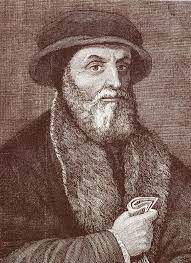I recently found my notes from a class with Robert Zoller on his length of life method. I was interested in the ancient techniques he had recovered from Guido Bonatti, which were something of a holy grail to him. The longevity class was eye-opening. But the Medieval techniques? Let’s just say I leave them to others!
In the 1990s, I was part of Bob’s study group on Plato and later Neoplatonic thinkers, and I attended a number of his astrology classes and lectures. We had both studied with Zoltan Mason and had an interest in forecasting and the history of astrology.
 I also enjoyed several of Zoller’s books, especially Tools & Techniques of the Medieval Astrologers (1981), an exploration of the late 13th century astrologer Guido Bonatti’s Liber Astronomiae and Medieval and ancient methods. Bonatti’s work was published in 1491 and included opinions from other astrological sources, notably the 9th century Muslim astrologer Abu Ma’shar.
I also enjoyed several of Zoller’s books, especially Tools & Techniques of the Medieval Astrologers (1981), an exploration of the late 13th century astrologer Guido Bonatti’s Liber Astronomiae and Medieval and ancient methods. Bonatti’s work was published in 1491 and included opinions from other astrological sources, notably the 9th century Muslim astrologer Abu Ma’shar.
The determination of length of life presumes the astrologer is studying a chart shortly after a child’s birth. We first astrologically eliminate those who would die before the age of 3 or 4. If the child is judged to survive, the astrologer proceeds to further analyze the chart. The technique includes delineating planetary rulers, the Hyleg (the “giver of life,” indicating times of illness and danger), the Alcocoden (showing the years of life), the anaretic (or “killing”) planet, and various Arabic Parts. Planetary aspects and connections with the Nodes may add or subtract years, providing a range. A full analysis would also need the confirmation of Primary Directions. There are numerous variations and methods to direct to the key points, and the calculations become rather involved (as they should be for such an important topic).
Zoller actually offered the longevity analysis to clients. My notes from the time show that he charged $200 (his fees were always reasonable), provided no guarantee, and could give a 5 to 7-year range.
I asked Bob for a class on this method since it wasn’t clear to me. One of my grandmothers was German, and we had the official family book with birth times (to the quarter hour) of her and her 12 siblings from the turn of the century. I thought this was great data to explore the technique.
We began with my grandmother, who had a strong constitution and lived to her late seventies. We spent at least an hour in lengthy calculations, only to find that Bonatti would have eliminated her to the “dies in infancy” pile! This was disappointing. Based on the recorded birth time, she had 1° Virgo rising, with a 25° Leo Moon. Undaunted, Bob insisted that, “I think she must have had Leo rising.” I shared with him that Ida had kept a spotless house and had worked as a domestic for years. While she always took good care of her appearance, my father had succinctly described her as “a little mouse.” And this is how I remember her – definitely not Leo rising. (I wrote about her chart here.)
Still, Zoller, remained adamant about the Leo Ascendant; the technique simply wouldn’t work without it! Well, we’ve all done it. And certainly with Mercury in Aquarius opposite Saturn and Pluto, he could be opinionated. (And what I believe Jung had actually found with his married couples data is that, quantum-like, the person considering it will affect the result).
But the lesson was over, and with it my interest in Medieval astrology as a practical tool. It was too involved, too tedious, too annoying. As Zoltan Mason used to remind us, “Life is short, art is long, opportunity fleeting, experiment treacherous, judgment difficult” (after Hippocrates). Bob had once waxed poetic about Medieval monks sitting up late into the night with calculations, as I imagine he must have done, too. Not for me. And, I felt, it was no more accurate than the 17th century techniques I was brought up with, and the 19th century methods I was already becoming attached to.
The astrological experience, though, had definitely stretched my mind. I still have tremendous respect for Robert Zoller’s scholarship, research and results. But I ultimately feel there is no one-size-fits-all, definitive, hardline technique in astrology. What we can all do, though, is use what resonates with us, and get to know the values and limitations of our methods. That will always give us much to think about.
See my post about Robert Zoller.
Zoltan Mason taught the 17th century astrologer Morin’s techniques. More on Morin here.
